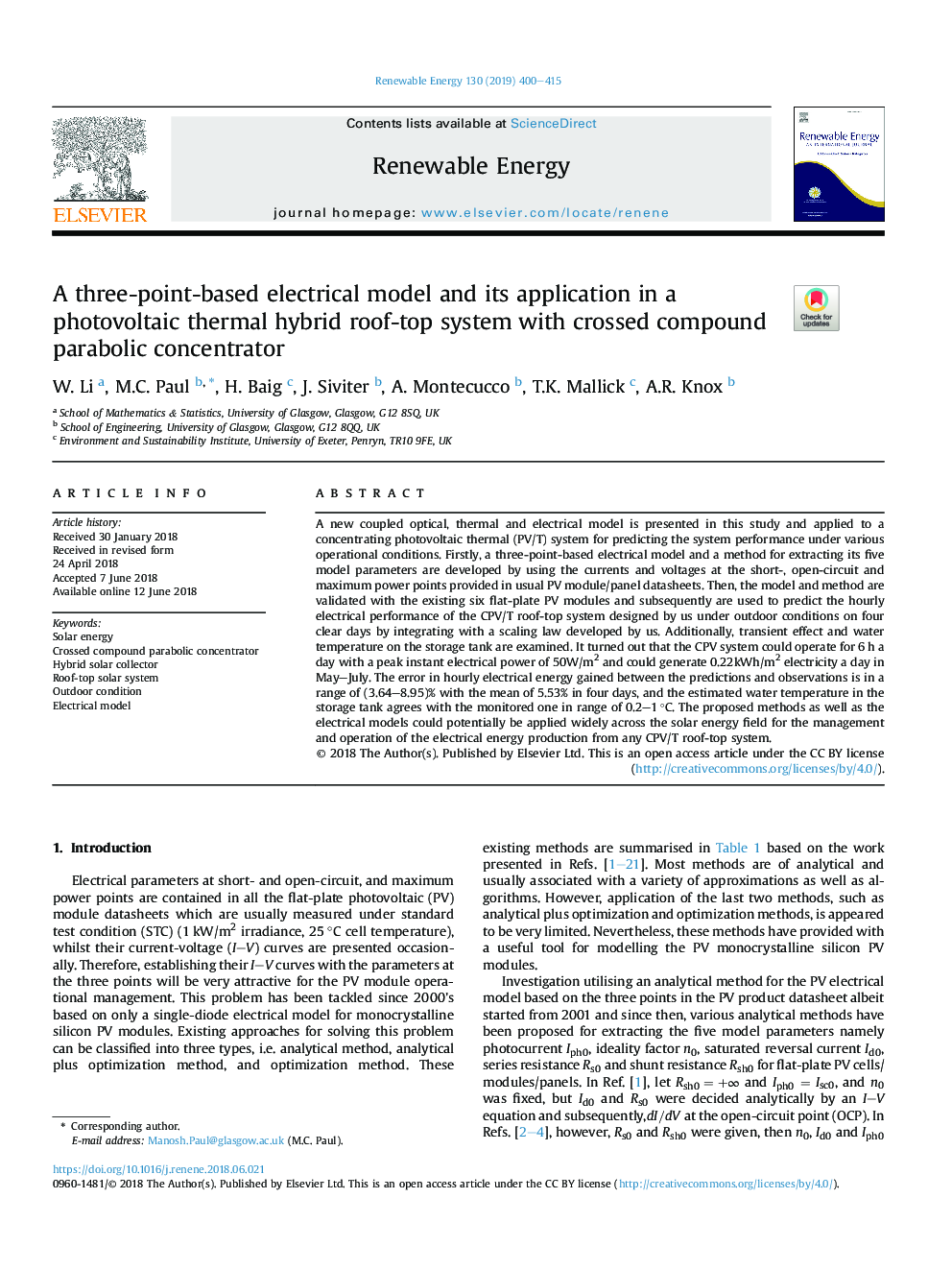| Article ID | Journal | Published Year | Pages | File Type |
|---|---|---|---|---|
| 6763771 | Renewable Energy | 2019 | 16 Pages |
Abstract
A new coupled optical, thermal and electrical model is presented in this study and applied to a concentrating photovoltaic thermal (PV/T) system for predicting the system performance under various operational conditions. Firstly, a three-point-based electrical model and a method for extracting its five model parameters are developed by using the currents and voltages at the short-, open-circuit and maximum power points provided in usual PV module/panel datasheets. Then, the model and method are validated with the existing six flat-plate PV modules and subsequently are used to predict the hourly electrical performance of the CPV/T roof-top system designed by us under outdoor conditions on four clear days by integrating with a scaling law developed by us. Additionally, transient effect and water temperature on the storage tank are examined. It turned out that the CPV system could operate for 6â¯h a day with a peak instant electrical power of 50W/m2 and could generate 0.22kWh/m2 electricity a day in May-July. The error in hourly electrical energy gained between the predictions and observations is in a range of (3.64-8.95)% with the mean of 5.53% in four days, and the estimated water temperature in the storage tank agrees with the monitored one in range of 0.2-1â¯Â°C. The proposed methods as well as the electrical models could potentially be applied widely across the solar energy field for the management and operation of the electrical energy production from any CPV/T roof-top system.
Keywords
Related Topics
Physical Sciences and Engineering
Energy
Renewable Energy, Sustainability and the Environment
Authors
W. Li, M.C. Paul, H. Baig, J. Siviter, A. Montecucco, T.K. Mallick, A.R. Knox,
